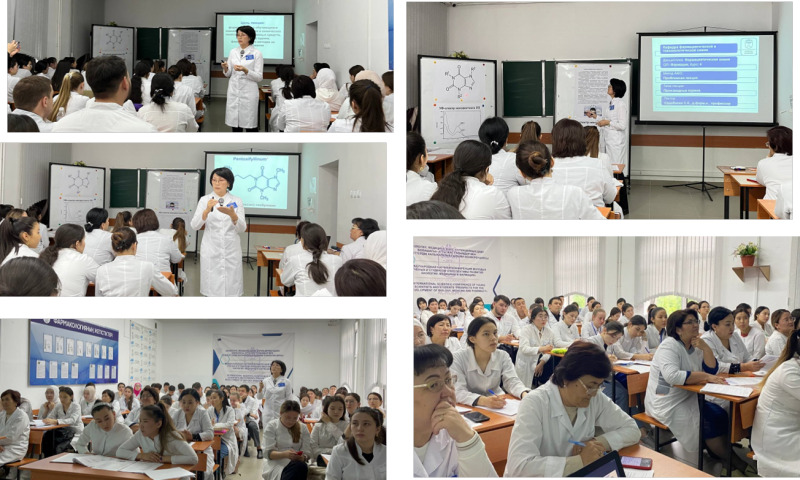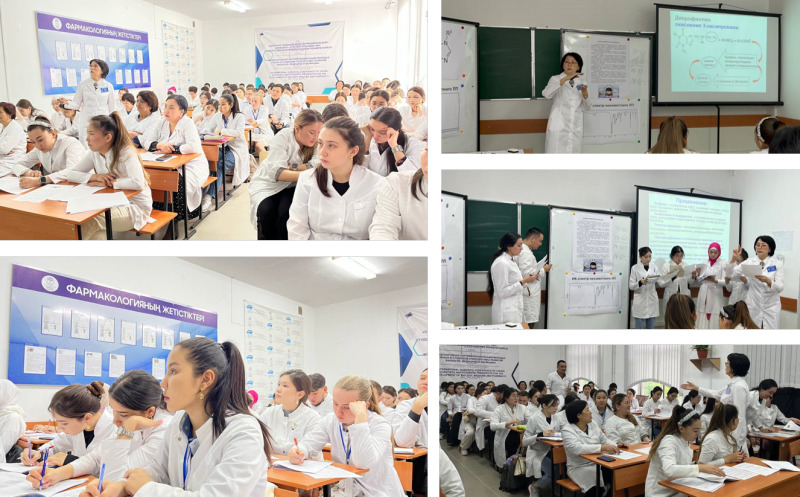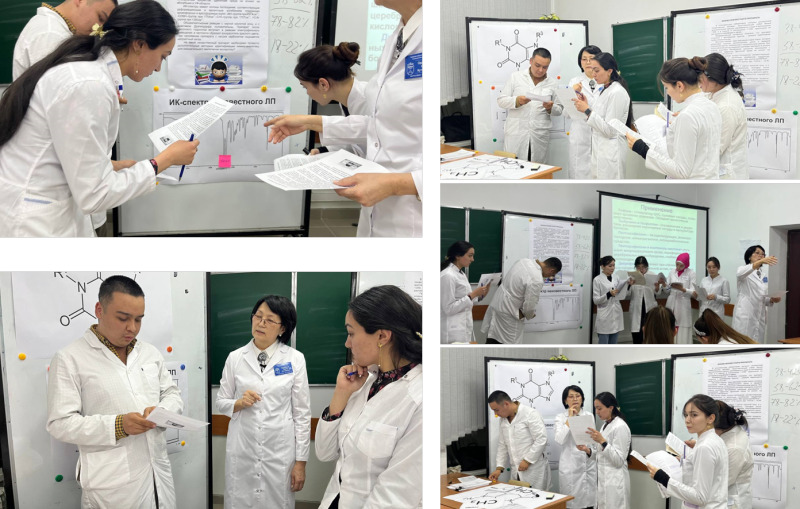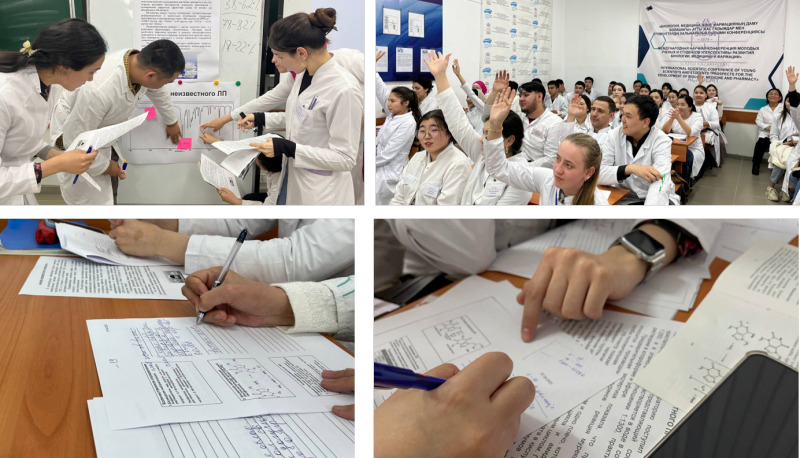Active lecture as a way to improve the efficiency of the educational process
A planned open lecture on pharmaceutical chemistry for 4th year students of the EP "Pharmacy" was held by Professor S.K. Ordabayeva. This time the lecturer used the PBL method, in which the students had to conduct a theoretical examination and identify an unknown drug. In accordance with the calendar-thematic plan, the lecture was devoted to the pharmaceutical analysis of drugs, purine derivatives.

During the lecture, the students' thinking was "launched" by the lecturer creating a problem situation before they received all the necessary information that constituted new knowledge for them. The lecturer created a problematic situation through the formulation of educational problems, specified educational problems, and put forward a hypothesis for their solution.

The problematic lecture was built in such a way that the knowledge of students was close to search, research activities. Here, the thinking of the students and their personal attitude to the material being assimilated took part.

The structure of the lecture included tasks of different levels of complexity, which can be continued in the further laboratory lesson and independent work of students on the topic under study. Of particular importance was the relationship between the lectures, which ensured the consistency and consistency of the material under consideration, gave an additional "push" in solving the problem situation.

Feedback from the audience in the form of testing students on the topic of the lecture showed the level of assimilation of the material and the effectiveness of the active lecture. Questioning students showed that the lecture was of great interest, during which they had to look for an answer to a given problem from every big and small piece of information masterfully presented by the lecturer.
 730 views
730 views
